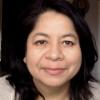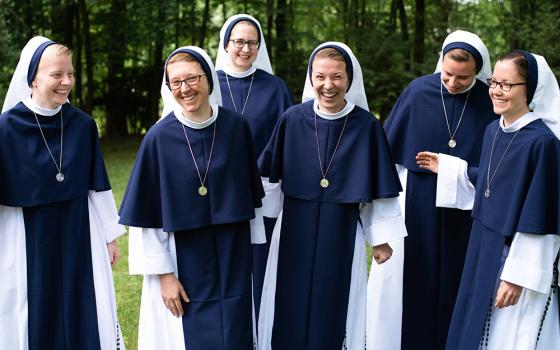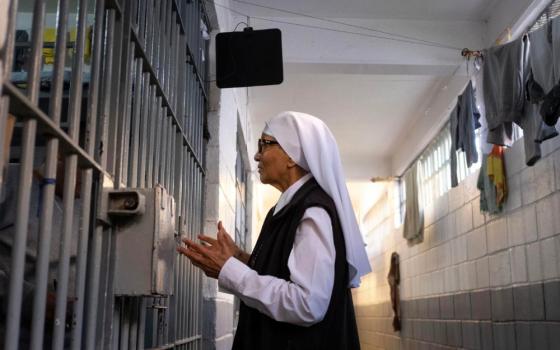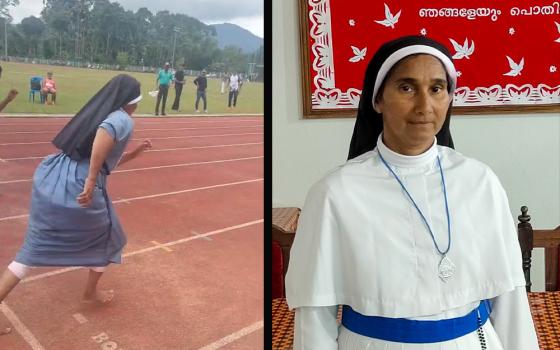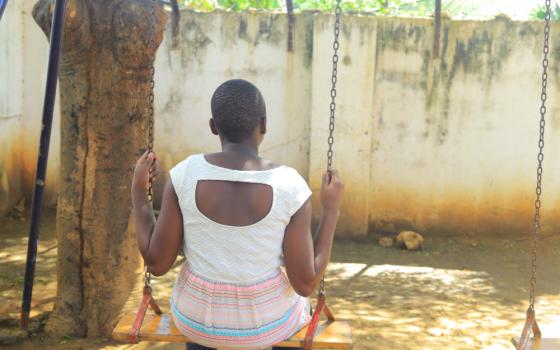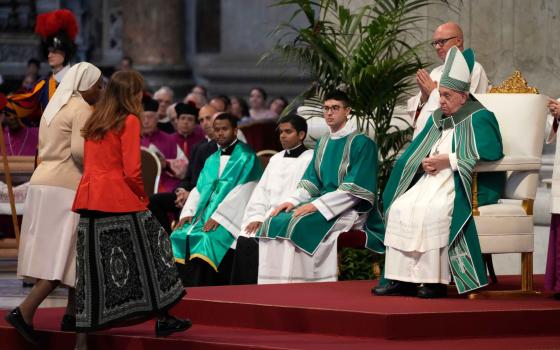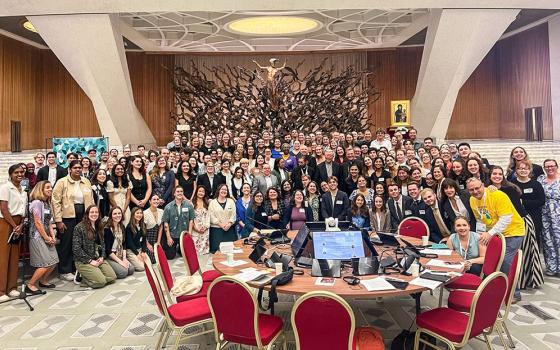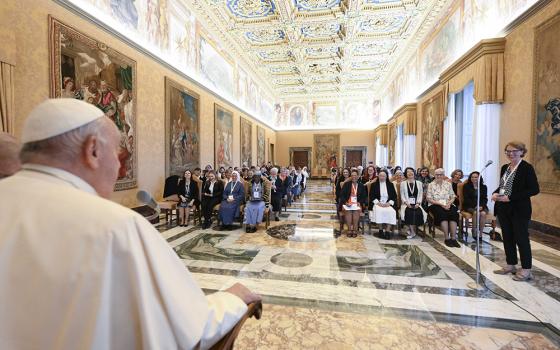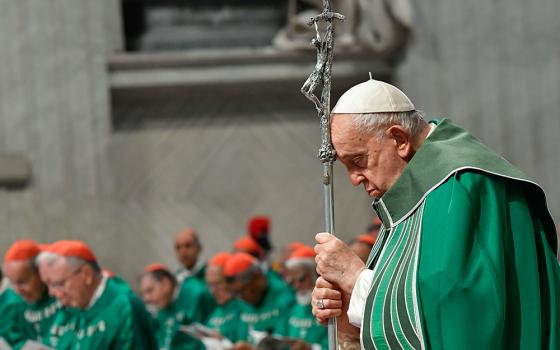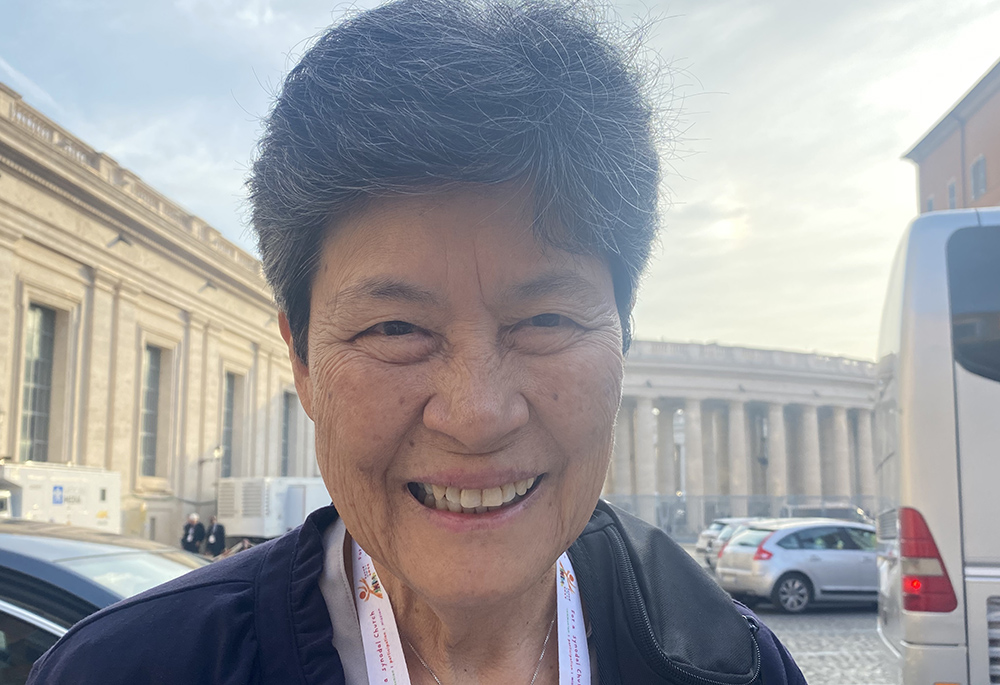
Mercy Sister Angela Perez, of Guam, poses for a photo Oct. 6 outside Paul VI Hall before the start of the third day of the Synod of Bishops in Vatican City. Seeing the pope at a roundtable, like other participants, gives her the sensation that she's witnessing the "dismantling of the hierarchical," she told Global Sisters Report. (GSR photo/Rhina Guidos)
On the third day of the Synod of Bishops, Mercy Sr. Angela Perez, of Guam, walked toward Paul VI Hall in Vatican City on Oct. 6 as if it were a normal day of work.
Since women haven't been allowed into such synods as full members before, she had no reference point, nothing to compare it to, she said. Yet as normal as the gathering seems, she also understands something is different and historic.
"I'm experiencing and witnessing the dismantling of the hierarchical," she told Global Sisters Report, describing the scene inside the synod hall — where cardinals, bishops, young and older lay Catholics, and women religious like herself are sitting together at roundtables, without hierarchical distinctions.
Pope Francis, like the other some 460 participants in the synod, is also sitting at a roundtable — the head of the Catholic Church being treated, more or less, just like everyone else in the room.
"It reminds me of when we have our chapter, the Sisters of Mercy, that that's how we gather — and to gather there like that and the pope in the circle at one of those tables with the other participants, it's just very positive to see that," she told GSR.
Likewise, Sr. Iris Altagracia González, of the Dominican Republic and a member of the Congregación de las Hijas de Jesús (Daughters of Jesus), said she quickly realized that for all the seemingly normal procedures, she noticed, too, something is different.
"I arrived all innocent, calm," she told GSR on Oct. 6. "And then, after being here, I realized the enormity, that I'm attending something really historic, really significant for the church. I think this is not a synod like the others."
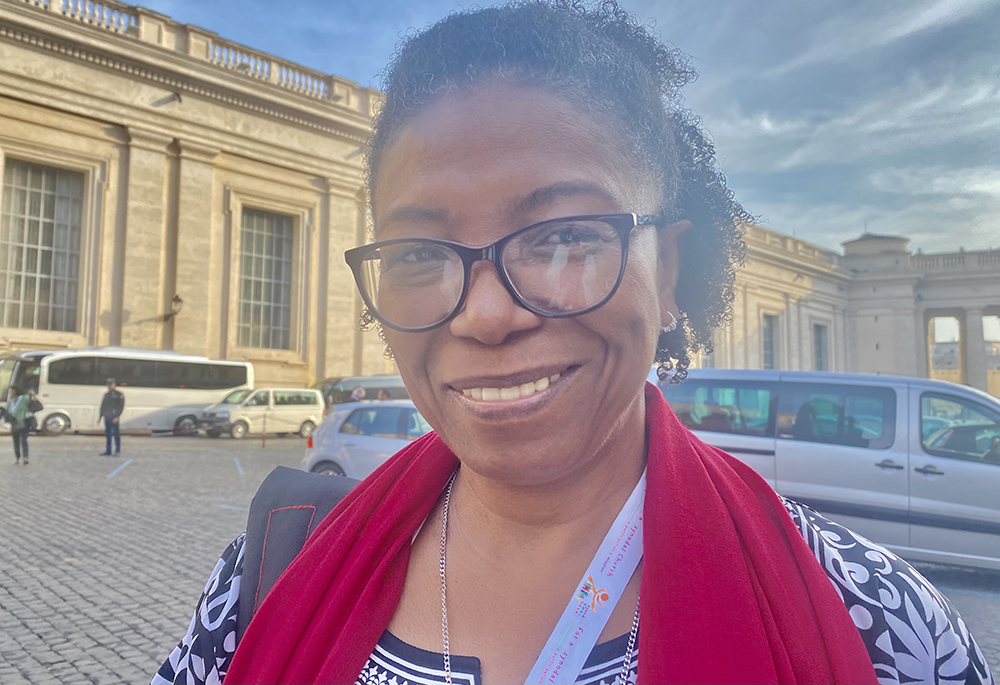
Sr. Iris Altagracia González heads toward Paul VI hall at the Vatican on Oct. 6, the third day of the Synod of Bishops. González, of Congregación Hijas de Jesús, said the synod is a return to a focus on Jesus and not on church rules. (GSR photo/Rhina Guidos)
It's puzzling for her to hear people outside the synod express worries about its discussions, since she believes that what's largely taking place is a conversation — a listening to oneself, others, and God, she said.
"I have this sensation that we're returning to the origin, to what the church was from the beginning and should be, based on the Gospel," she said, "to follow Jesus and not to focus on rules. This is about following Jesus as a church, as a community, and from that point, there is nothing to fear."
If there's one thing she could say to those who worry about the synod, said González, it's that the Gospel of Jesus does not inspire fear.
"That, to me, is what's most important, to follow Jesus," she said. "Wanting to build a community like the one Jesus had in mind should not be a reason to fear. I don't understand."
The only thing to understand, she said, is that Jesus was a person who embraced all, who didn't throw stones, who welcomed all.
"So, why could we be afraid to be like Jesus?" she asked. "I don't get it."
Advertisement
The atmosphere inside the synod hall has been one of great welcome, both women said. But it's also one that's making way for a different manner of leading the church and that includes listening to a wider circle of voices, and letting the Holy Spirit guide conversations.
"What I'm witnessing is a different leadership style, like servant leadership style, where we're all gathered at the table and participating, contributing. The voices at my table are the voice of a young person, a laywoman, and in my case, an older woman, a religious, and then the others are bishops, all together at the table sharing," Perez said.
And at the center of it all, the Holy Spirit is the one in charge, not a person, she said. It's been a tough lesson for her to learn but one she's been trying to understand for a long time.
When the bishop in the diocese where she serves asked her to attend the synod, she said she was in "disbelief." But she remembered something that's never left her from an old mentor, Redemptorist Fr. Bernard Häring, who himself attended a historical event that marked the church — the Second Vatican Council — and asked her to write about what it meant to profess a belief in the Holy Spirit. The synod is putting that to the test, she said.
"I asked, 'Why me?' I said, 'I'm 77 years old with health issues,' but I guess the Holy Spirit says, 'You're chosen.' So, that evening I said to the bishop, 'Let me pray over it.' That evening I looked at my phone and there was an article in America [magazine] that said something like, 'Does God ever ask you to do too much?' "
